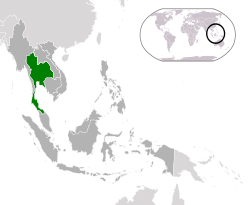http://www.eurasiareview.com/08122011-thailand-tribulations-of-migrant-workers-analysis/
December 8, 2011
By Panchali Saikia
The recent report of the International Trade Union Confederation (ITUC) on the trade policies of Thailand to the WTO General Council Review reveals a serious violation of the fundamental rights of workers. The report highlights that there are no provisions in Thai labour or trade policies for the protection of the migrant workers, various ethnic groups, indigenous or stateless people from forced labour and human trafficking. Under such a context, where does the problem lie- in trade/labour policies of Thailand or its immigration policy?
This article highlights the tough Thai immigration policies and its negative impact leading to the victimization of migrants through forced labour. The article addresses two critical issues: the legal status of the migrants in Thailand today and the impact of the legalization process.
Mapping The Legal Status Of Migrant Workers

Thailand
The migrant workers in Thailand are mostly from Myanmar, Cambodia and Laos. They are forced to move out of their country as a result of either internal conflict or severe economic hardship. Thailand for nearly a decade has been trying to amend suitably and implement the policies to address the issue of immigration of undocumented migrants. The increase in number of migrants in Thailand has created a serious concern for the government. According to the Thai Ministry of Labour report of February 2011 there are around 8,45,139 registered migrants and the illegal migrants range from double to triple then the registered migrants. The rise in illegal migrants has become a major security threat for Thailand; this has led to crimes, drugs stings and fear of migrants taking jobs and opportunities of the local people.
However, it is important to note that the migrants in Thailand play a major role economically. Thai industries roughly employ two million migrant workers in construction, plantations, textile and fishing industries and also domestic services. Their contribution to the fishing and processed seafood industry is significant, as Thailand remains the largest exporter in this segment. Migrant workers are in great demand in Thai industries; for which large numbers of them are trafficked from the neighbouring countries. They also fall prey to extortion, debt bondage, exploitations by brokers and employers. They are detained or deported if they fail to abide by the immigration laws. These migrants are also forced to pay bribes to escape from these kinds of legal hassles and deportation. The situation is more precarious for women migrant workers. They are trafficked into prostitution and are forced to remain in the brothels under the fear of debt of the employer, arrest, deportation or further sexual abuses. Under this legalization process, the living condition of these migrants in Thailand has become a serious issue.
Legalization: The Process And Problems
The migrants in Thailand will have a work status and will be able to live in Thailand legally only when they are registered under an employer. Loss of employment will mean loss of their legal status, which is restricted to the area of their registration/employment for which they cannot freely move within the country.
Another major provision in the policy involves the nationality verification required from the migrant’s native country. This provision was included under the Memorandum of Understanding (MoU) signed by the Thai government with the governments of Cambodia, Myanmar and Laos in 2003. The registration along with work permit, a temporary passport and nationality verification letter must also have the registration fee of 3,800 baht (US$115). This is a complicated and time consuming process for which migrants generally engage a private broker. Most of the migrants prefer to escape this process as this becomes unaffordable for them.
Myanmarese migrants face difficulties in getting the nationality verifications, as they fear falling prey to the Myanmarese army and to ethnic rebel groups. However, the Myanmar embassy in Thailand has now put emphasis on the issuing of temporary residency passports and work permits for the migrants. On the other hand the government of Cambodia and Laos has from time to time cooperated with their people in the registration process. But, with such inconsistency in Thai policies, will these efforts and assistance from the native governments be sufficient?
The situation of migrants has further worsened and become even more complex in the aftermath of the floods in Thailand. Thousands of them who had escaped to the border towns due to floods now want to return to their specific provinces. But it is unclear whether they will be allowed to do so as they are now considered illegal migrants under the Thai immigration law. Moreover, many migrants who successfully acquired a legal status under the registration process held this year in July may have to go through the entire registration process all over again. The Report also states that there are no track records of migrants who were detained or deported. There is also no mention about the 30,000 Myanmarese migrants who were detained by Thai army while they tried to escape from the flood. Under such a complicated scenario, how the region will achieve an ASEAN Community by 2015 is anybody’s guess.
Panchali Saikia
Research Officer, SEARP
email: panchali@ipcs.org
Research Officer, SEARP
email: panchali@ipcs.org


No comments:
Post a Comment